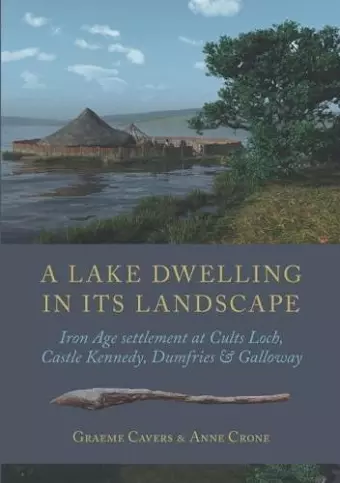A Lake Dwelling in Its Landscape
Iron Age settlement at Cults Loch, Castle Kennedy, Dumfries & Galloway
Anne Crone author Graeme Cavers author
Format:Hardback
Publisher:Oxbow Books
Published:13th Oct '17
Currently unavailable, and unfortunately no date known when it will be back

Cults Loch, at Castle Kennedy in Dumfries & Galloway, Scotland, lies within a landscape rich in prehistoric cropmark sites and within the loch itself are two crannogs, one of which has been the focus of this study. A palisaded enclosure and a promontory fort on the shores of the loch have also been excavated. The Cults Loch crannog is only the second prehistoric site in Scotland to be dated by dendrochronology and analysis has revealed the very short duration of activity on the crannog in the middle of the 5th century BC. Bayesian analysis of the dating evidence from all the excavated sites has yielded a chronological sequence which suggests a dynamic and sequential settlement pattern across the landscape. The implications of this sequence for later prehistoric settlement throughout south-west Scotland are explored. The Cults Loch Landscape Project arose out of the Scottish Wetland Archaeology Programme (SWAP), the objective of which is to fully integrate the wetland archaeological resource of Scotland into the more mainstream narratives of ‘dryland’ archaeology. The Cults Loch project has sought to bridge this apparent divide between ‘wetland’ and ‘dryland’ by focusing on a wetland site, the crannog, which lies at the centre of a prehistoric landscape, rather than being peripheral to it. Thus, the wealth of well-preserved evidence from the crannog, particularly the rich ecofactual assemblages, as well as the higher chronological resolution possible through the dendro-dating of waterlogged timbers, are brought to bear on our understanding of the evidence from the cropmark sites around the loch. The role and function of crannogs are also explored via the relationship between the crannog in Cults Loch and its social and physical landscape.
This is an impressive book; well organised, and marshalling a considerable body of diverse and detailed information. It is clearly written and very well illustrated… It is an invaluable contribution for anyone with interests in prehistoric lake settlements, methods and approaches in wetland archaeology, and the later prehistory of Scotland. * Proceedings of the Prehistoric Society *
…an exemplar of what is achievable with targeted programmes of research excavation, and the book will be of interest to anyone who studies later prehistory in Britain and Ireland, particularly settlement patterns and chronology. * Archaeological Journal *
This publication shows how far the study of crannogs has advanced from Munro’s time. Far from being on a specialist periphery, crannogs and their material culture lie at the core of cultural contextualisation, from human response to the landscape to evidence for everyday life. The project’s strong community participation and outreach, from local volunteers to schools and Stranraer Museum, show how the (hi)stories of crannogs continue, impacting positively on lives today. * British Archaeology *
In the range and detail of the evidence presented, this volume is a significant addition to Iron Age wetland archaeology, as it is to the re-assessment of the form, function and use of such lakeside locales for living, however transitory and impermanent they may have been. In its detailed consideration of the chronological relationships between the promontory crannog and the nearby dryland enclosed sites, it both complements and contrasts with other recent contributions to south-west Scotland’s later prehistory seen in wider perspective. * Antiquity *
ISBN: 9781785703737
Dimensions: unknown
Weight: unknown
304 pages